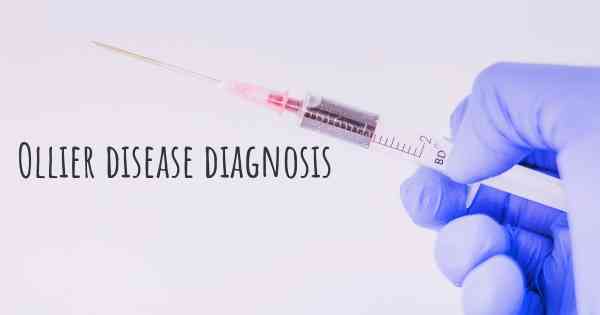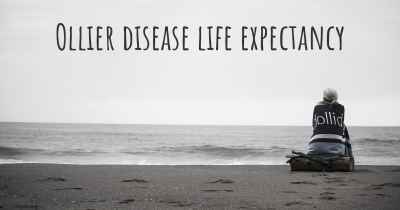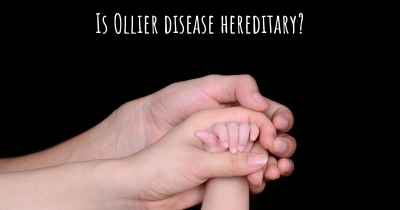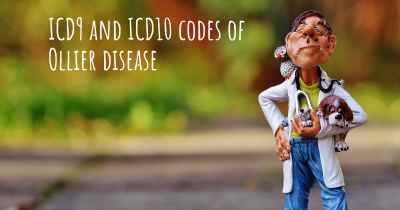How is Ollier disease diagnosed?
See how Ollier disease is diagnosed. Which specialists are essential to meet, what tests are needed and other useful information for the diagnosis of Ollier disease

Ollier disease, also known as enchondromatosis, is a rare genetic disorder characterized by the development of multiple benign cartilage tumors called enchondromas. These tumors primarily affect the bones of the limbs, particularly the long bones, and can lead to various complications such as bone deformities, fractures, and limb length discrepancies. Diagnosing Ollier disease involves a combination of clinical evaluation, imaging studies, and histopathological analysis.
Clinical Evaluation:
The initial step in diagnosing Ollier disease involves a thorough clinical evaluation by a healthcare professional. The doctor will review the patient's medical history, including any family history of similar conditions, and perform a physical examination. During the examination, the doctor will assess for the presence of bone deformities, limb length discrepancies, and any other signs or symptoms associated with Ollier disease.
Imaging Studies:
Imaging studies play a crucial role in the diagnosis of Ollier disease. They help visualize the enchondromas and assess their location, size, and distribution within the bones. The most commonly used imaging techniques include:
- X-rays: X-rays are often the first imaging modality used to evaluate suspected cases of Ollier disease. They can reveal the presence of enchondromas as well as any associated bone deformities or fractures. X-rays provide a good overall view of the affected bones and can help guide further diagnostic investigations.
- Magnetic Resonance Imaging (MRI): MRI is a more detailed imaging technique that uses powerful magnets and radio waves to create cross-sectional images of the body. It is particularly useful in assessing the extent and characteristics of enchondromas, as well as detecting any potential complications such as soft tissue involvement or nerve compression. MRI can provide valuable information for treatment planning.
- Computed Tomography (CT) Scan: CT scans use a series of X-ray images taken from different angles to create detailed cross-sectional images of the body. They can provide a more comprehensive evaluation of the bones and enchondromas, especially in complex cases or when surgical intervention is being considered.
- Ultrasonography: Ultrasonography uses high-frequency sound waves to create real-time images of the body's structures. While it is not commonly used for diagnosing Ollier disease, it may be employed in specific cases to assess soft tissue involvement or guide procedures such as biopsies.
Histopathological Analysis:
Histopathological analysis is the definitive diagnostic method for Ollier disease. It involves examining a tissue sample obtained through a biopsy under a microscope to identify the characteristic features of enchondromas. The biopsy is typically performed by a surgeon or an interventional radiologist using image guidance to ensure accurate sampling. The histopathological analysis helps differentiate enchondromas from other bone tumors and confirms the diagnosis of Ollier disease.
Genetic Testing:
In some cases, genetic testing may be recommended to confirm the diagnosis of Ollier disease. This involves analyzing a blood or saliva sample to identify specific genetic mutations associated with the condition. Genetic testing can be particularly useful when there is uncertainty in the diagnosis or when there is a family history of Ollier disease.
Conclusion:
In summary, diagnosing Ollier disease involves a combination of clinical evaluation, imaging studies, histopathological analysis, and sometimes genetic testing. The clinical evaluation helps assess the signs and symptoms associated with the disease, while imaging studies provide detailed visualization of the enchondromas and associated bone abnormalities. Histopathological analysis of a biopsy sample confirms the diagnosis by identifying the characteristic features of enchondromas. Genetic testing may be considered in certain cases to further support the diagnosis. A comprehensive diagnostic approach is essential to accurately diagnose Ollier disease and guide appropriate management and treatment strategies.
X-ray and MRI can be used to diagnose olliers disease
Posted May 18, 2017 by Sarah Jane 5070
Posted Aug 21, 2018 by Pauline 700








